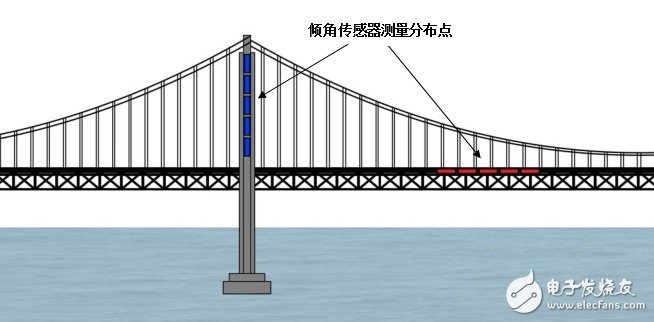Bridges are one of the infrastructures that make up the transportation network. They are often installed on rivers and lakes to connect the blocked road sections. Due to the long-term impact of natural environmental factors and strains, bridges are often dangerous in terms of safety. In order to avoid the occurrence of major accidents due to the health of the bridge, it is necessary to establish a standardized and perfect monitoring system. Among the numerous physical quantities to be measured, it is an indispensable task to use the tilt sensor to measure small changes in the tilt angle of the bridge.

In the safety monitoring of bridges, the inclination sensors are usually arranged on the bridge deck and the pylon to measure the deformation of the bridge under load and to evaluate the integrity and stability of the bridge structure. Among them, the main purpose of the monitoring of bridge deck deformation is to judge the important technical parameters such as the stiffness and structural bearing capacity of the bridge in the vertical direction, and these are the key reference indicators in the process of bridge identification, modification and new bridge acceptance. The pylon is another place where the inclination sensor needs to be used for measurement. The inclination value of the pylon reflects the integrity and stability of the bridge structure to a certain extent, and whether it will endanger the safety of the bridge.
The SCA103T-D04 is a single-axis tilt sensor chip with a 15° angle of measurement in the Murata SCA103T series. The product is based on 3D-MEMS technology and uses the differential measurement principle. Unlike the SCA100T, although the SCA103T series tilt sensor also uses two sensitive components, it is mounted on the same axial axis and is a single-axis measuring tilt sensor chip. Compared with the single-axis tilt sensor SCA61T series, its accuracy is higher. High calibration accuracy, low temperature drift, high resolution combined with low noise and robust design make the SCA100T an ideal product for high-precision level measuring instruments. At the same time, Murata's tilt sensor has better vibration resistance and impact resistance.
The main pain points in obtaining customers in foreign trade are fierce market competition, high customer acquisition costs, low customer stickiness, and single marketing methods. With the changes in the market environment, traditional marketing methods
Orange sample
Guangdong ganzhou , https://www.tlqcjs.com
